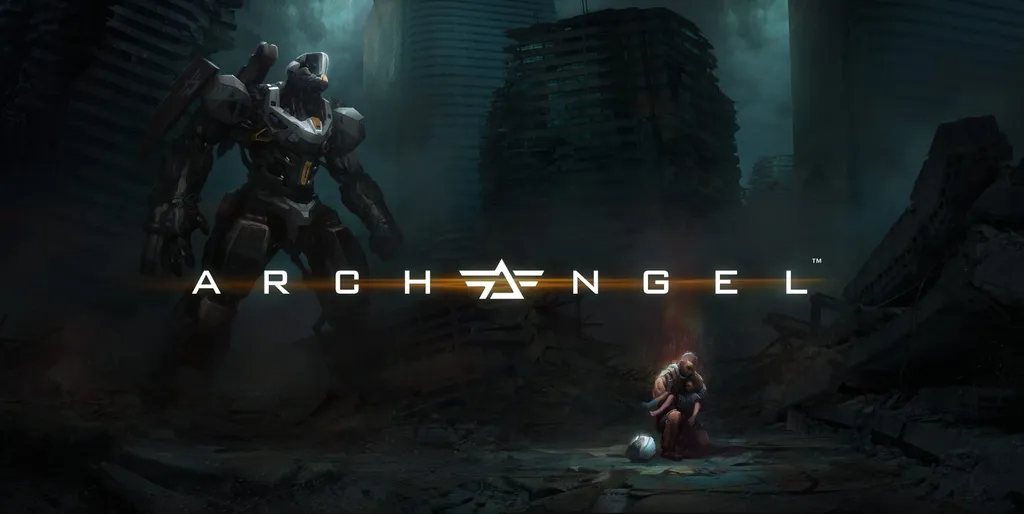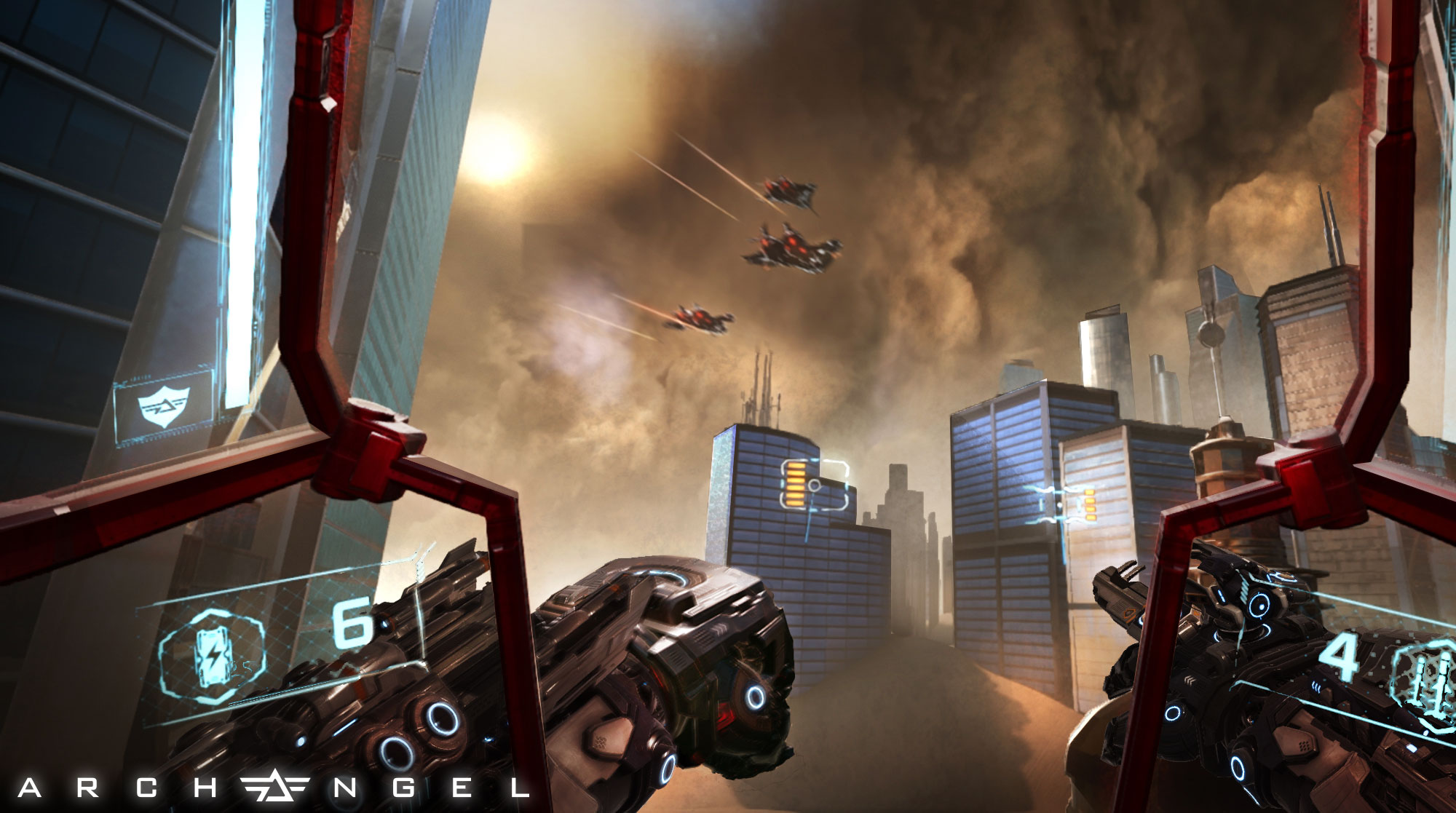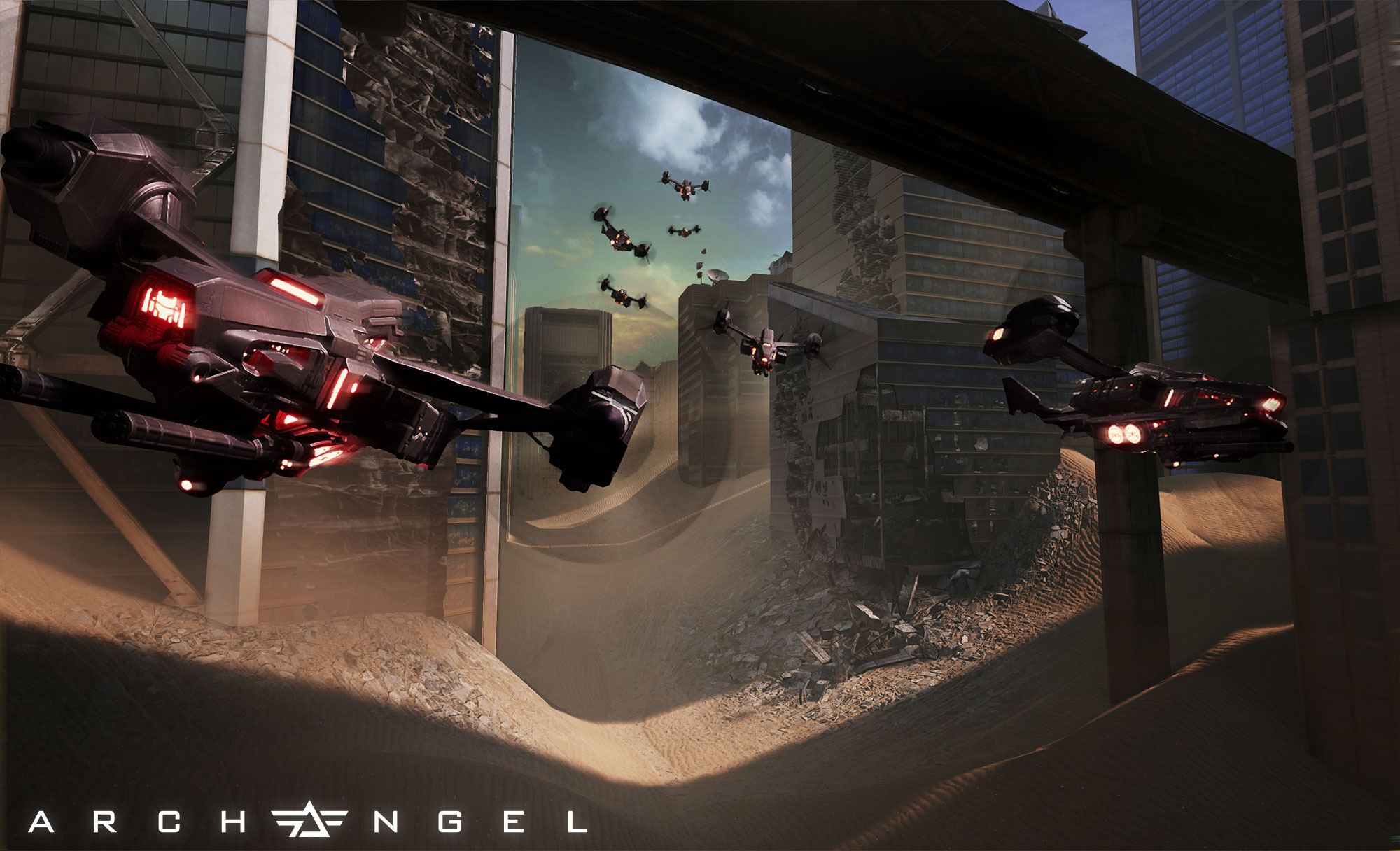It’s not surprising to see Skydance Interactive’s first VR game double down on storytelling; the outfit is one part of a larger film and TV production studio that’s no doubt eager to unearth the narrative potential of the medium. What’s more curious, though, is the decision to root that story in a game that’s so clearly influenced by films and games in which plot takes a back seat.
Put simply, Archangel is Pacific Rim by way of Time Crisis. Set in a war-torn future, you play as the pilot of an enormous mech that could easily be mistaken for one of the robots in Guillermo del Toro’s 2013 blockbuster. The core difference is the combat, which mostly favors shootouts over melee encounters. What you get, then, in an on-rails shooter with three to five hours of playtime depending on the difficulty you select. For a VR game, it boasts impressive production values and provides familiar fun, but it’s quickly forgotten and its focus on story is unfortunately misjudged.
As a straight up shooter, Archangel is well-made, if unremarkable. You play from within the cockpit of your mech, using your arms to operate your mechanical beast’s hands (or your head, if playing with DualShock 4 instead of the preferred two Move controllers). Each of your mech’s hands fires a different kind of weapon, starting off with rockets and machine guns and eventually gaining access to homing missiles and a rail gun. Both arms also sport shields with limited energy meters to block incoming fire. They’re recharge when empty, but you won’t be able to fire when active. This gives the gameplay an appreciated immediacy; you’ll need to know when to fire and when to block, or your health bar will quickly diminish.
Even on the Normal difficulty, Archangel presents a decent challenge; I died maybe three or four times in total, and it would have been a lot more had it not been for the upgrade system I could use to personalize my gameplay style in between levels.
The foundation is solid, though Archangel rarely delivers anything beyond that. Late-game wolf-like enemies that have to be punched inject a welcome activeness to the gameplay, but for the most part you’ll be dragging two aiming reticles around like a mouse, getting rid of enemies as soon as they pop up. Those reticles are a little intrusive, betraying the otherwise seamless UI; it would have been nice to represent them as laser targets rather than obvious white circles that constantly reminded me I was in an on-rails shooter. It’s a shame, as visually this is easily one of the more impressive PSVR games out there, and I enjoyed the immersion of sitting in my mech and staring out at the detailed world in front of me.
Visuals might actually be the main reason to see the game through; on a purely presentational level it feels like it truly belongs in the second wave of VR content if only because other apps aren’t able to achieve this level of fidelity. True, textures can be muddy on console (I’d guess the above trailer is from the PC build), but the size of levels is impressive, and the locations are often unique and convincing. The sense of scale you’ll get in the later levels is something to really relish in, too.
But if a lack of inspiration is a hindrance to the gameplay, it’s pretty much fatal to the narrative.
Archangel starts with a painfully long introduction sequence before revealing itself as an arcade shooter, and regularly interrupts the gameplay’s otherwise satisfying flow to deliver more of its generic narrative. Your pilot (who can be male or female), is quickly given a reason to feel very, very angry with the opposing side of tanks and soldiers, but instead of exploring any possible depth your character mainly barks aggressive orders and refuses to give the player much reason to sympathize. The script only scratches the surface of grief and the dialogue between the cast is half-baked.
You’ll occasionally be ripped away from the action mid-level to watch muddled, largely incoherent flashback sequences, and Skydance expects you to be so engrossed in the cookie cutter characters that you’d actually sit and listen to optional conversations with the supporting cast in between missions, surrounded by darkness. With no connection to the world and characters, there’s little reason to actually do so. The plot is little more than an obstacle, and the fact that it takes itself so seriously hurts it all the more.
Without it, the game’s short length would be more exposed, but it would add some replay value to it too; I’d be tempted to jump back into levels to try for higher scores on harder difficulties if I didn’t know it was going to come with significant portions with no action.



























